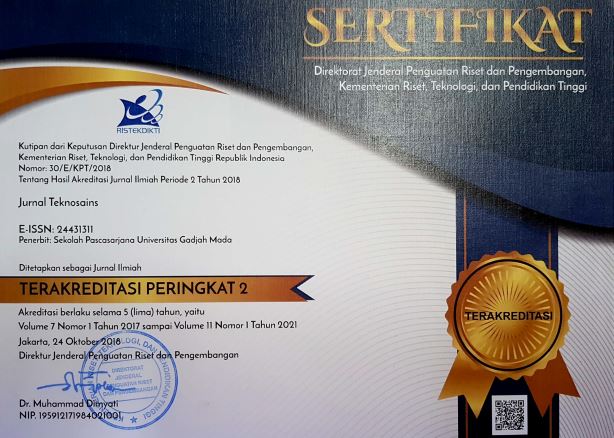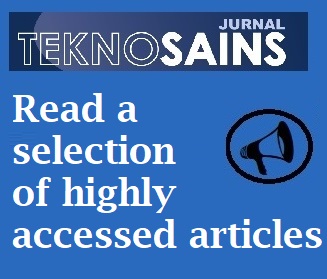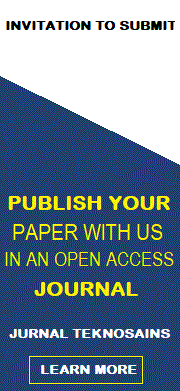Pengaruh faktor kerentanan fisik dan sosial akibat erupsi gunung merapi terhadap ketercapaian sdgs dan irbi
Muhammad Reza Aristo(1*), Dyah Rahmawati Hizbaron(2)
(1) Universitas Gadjah Mada
(2) Universitas Gadjah Mada
(*) Corresponding Author
Abstract
The purpose of this study was to identify the influence of physical and social vulnerability factors due to the eruption of Mount Merapi in Yogyakarta. Furthermore, this study identifies the significance of physical and social vulnerability to the achievement of the SDGs in Yogyakarta. The achievement of SDGs number 11 is supported by indicators of the percentage of the number of dead or missing victims to the total number of disaster events, disaster risk index, regional resilience index, number of resilient villages/kelurahan that have been formed, integrated early warning system, and availability of contingency plans. The achievement of SDGs number 13 is further explained using a simple indicator, namely greenhouse gas emissions. In this case, the research contribution is expected to add an indicator explaining the achievement of SDGs number 13 in addition to climate change. This study uses IRBI (Indonesian Disaster Risk Index) data to indicate the achievement of disaster risk reduction in the research area. The achievement of the SDGs, which has increased every year, certainly has positive implications for handling vulnerable groups. The location of this research study is the District of Turi. Turi sub-district is important to be studied considering the current conditions and potential future exposure to the eruption of Mount Merapi. This study utilizes the Analytical Hierarchy Process (AHP) technique to determine the weight of the indicators used in vulnerability modeling. The research data were tested using statistical analysis of data normality, probabilistic Poison, and the two-way ANOVA effect test. The results showed that there was no influence of the variables of physical vulnerability and social vulnerability on the existing SDGs. The conclusion of the research on the effect of physical and social vulnerability factors on the eruption of Mount Merapi Volcano shows that there is no influence of the value of physical and social vulnerability in Turi District on the achievement of SDGs in the form of the DIY Disaster Risk Index
Keywords
Full Text:
PDFReferences
Armaya, D & Hizbaron, DR 2015, ‘Penaksiran tingkat kerentanan sosial terhadap bahaya banjir lahar pasca erupsi gunungapi merapi (Studi Kasus: Kec. Cangkringan, Kec. Ngemplak dan Kec. Kalasan, Kab. Sleman, Prov. DIY)’, Jurnal Bumi Indonesia, vol. 4, no. 4, pp. 1–10.
BNPB 2011, Rencana Aksi Rehabiilitasi dan Rekonstruksi, Badan Nasional Penanggulangan Bencana, Jakarta.
BPBD 2013, Rencana Penanggulangan Bencana Daerah Istimewa Yogyakarta 2013-2017, BPBD DIY, Yogyakarta.
BPS 2020, Kecamatan Turi dalam Angka 2020, Badan Pusat Statistik, Sleman.
Cutter, SL 1996, ‘Vulnerability to environmental hazards’, Progress in Human Geography, vol. 20, no. 4, pp. 529–539.
Fauziyanti, NU & Hizbaron, DR 2020, ‘Sustainable Livelihood strategies: How urban community resilient towards disaster?’, Indonesian Journal of Geography, vol. 35, no. 2, pp. 246–259.
Hapsari, RI et al. 2020, ‘Naïve Bayes Classifier for Debris Flow Disaster Mitigation in Mount Merapi Volcanic Rivers, Indonesia, Using X-band Polarimetric Radar’, International Journal of Disaster Risk Science, vol. 11, no. 6, pp. 776–789, <https://doi.org/10.1007/s13753-020-00321-7>.
Hizbaron, D. et al. 2015, ‘Kajian Pola Spasial Kerentanan Sosial, Ekonomi dan Fisik di Wilayah Rawan Erupsi Gunungapi Merapi, Yogyakarta’, Jurnal Riset Kebencanaan Indonesia, vol. 1, no. 1, pp. 16–24.
Hizbaron, DR et al. 2012, ‘Urban vulnerability in Bantul district, Indonesia-towards safer and sustainable development’, Sustainability, vol. 4, no. 9, pp. 2022–2037.
Jenkins, S et al. 2013, ‘The Merapi 2010 eruption: An interdisciplinary impact assessment methodology for studying pyroclastic density current dynamics’, Journal of Volcanology and Geothermal Research, vol. 261, pp. 316–329.
Matyas, D & Pelling, M 2012, ‘Disaster Vulnerability and Resilience : Theory, Modelling and Prospective’, Foresight, , no. January, p. 70.
Munthafa, A & Mubarok, H 2017, ‘Penerapan Metode Analytical Hierarchy Process Dalam Sistem Pendukung Keputusan Penentuan Mahasiswa Berprestasi’, Jurnal Siliwangi, vol. 3, no. 2, pp. 192–201.
Pradana, A et al. 2018, ‘Vulnerability assessment to frost disaster in dieng volcanic highland using spatial multi-criteria evaluation’, IOP Conference Series: Earth and Environmental Science, vol. 148, no. 1.
Probosiwi, R 2013, ‘Manajemen Risiko Tsunami Untuk Penataan Ruang Di Pesisir Perkotaan Pacitan Jawa Timur’, Jurnal Teknosains, vol. 2, no. 2, pp. 121–134.
Rizal, M & Hizbaron, DR 2014, ‘Analisis kerentanan fisik bahaya banjir lahar di desa sekitar kali putih kabupaten magelang’, vol. 4, no. 1, pp. 175–184.
UNDRR 2019, Making Cities Resilient report 2019: A snapshot of how local governments progress in reducing disaster risks in alignment with the Sendai Framework for Disaster Risk Reduction, UNDRR.
Article Metrics
Refbacks
- There are currently no refbacks.
Copyright (c) 2023 Muhammad Reza Aristo & Dyah Rahmawati Hizbaron

This work is licensed under a Creative Commons Attribution-ShareAlike 4.0 International License.
Copyright © 2024 Jurnal Teknosains Submit an Article Tracking Your Submission
Editorial Policies Publishing System Copyright Notice Site Map Journal History Visitor Statistics Abstracting & Indexing









